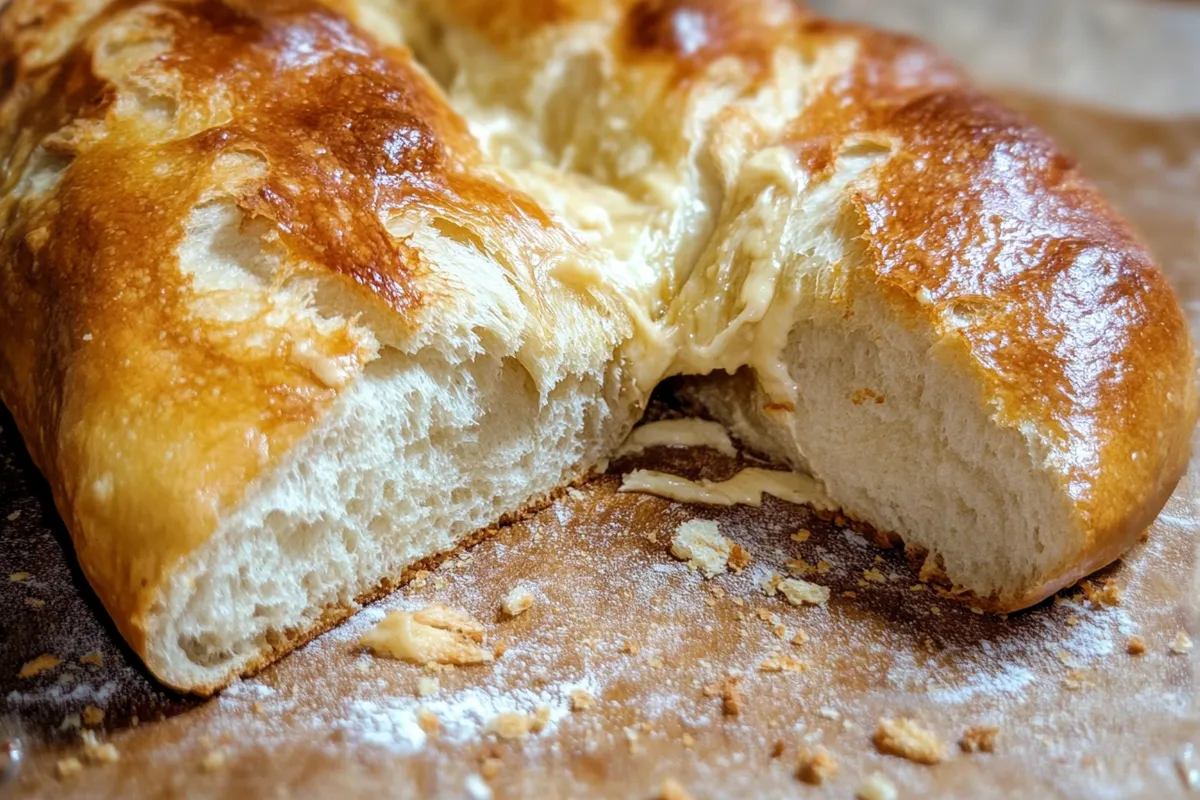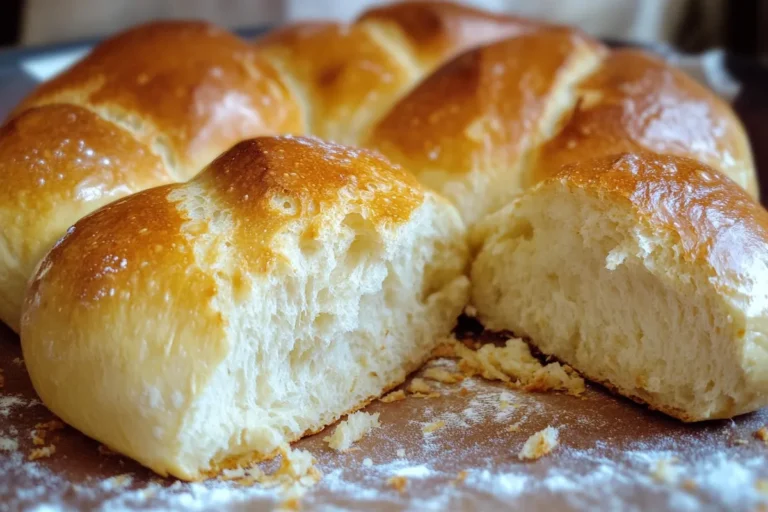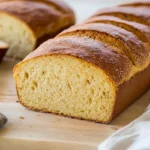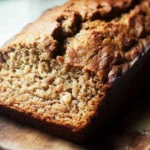There’s something undeniably irresistible about the aroma of freshly baked Cuban bread wafting through your kitchen. This beloved staple is more than just intriguing flavors—it symbolizes the heartwarming essence of Cuban culture and cuisine.
With its crisp crust and airy interior, a Cuban bread recipe invites creativity in the kitchen, making it perfect for sandwiches, toasted bruschetta, or simply enjoyed with butter. The beauty of this bread lies in its adaptability—experiment with adding herbs, spices, or a touch of sweetener to customize it to your taste.
For those aiming for an authentic experience, mastering the technique of steam baking is essential for achieving that signature crust. Whether you’re a novice or a seasoned baker, this guide will equip you with expert tips and variations to ensure your loaf turns out just right.
Prepare to delight your senses and impress your friends with your very own homemade Cuban bread!
Ingredients for Cuban Bread Recipe:
Making a delicious Cuban bread requires a selection of quality ingredients that contribute to its unique texture and flavor. Below is a detailed list of ingredients needed to serve 8–10 people:
Essential Ingredients
- Flour: 4 cups of all-purpose flour. This forms the base of the bread, providing structure and chewiness.
- Water: 1 ½ cups of warm water (about 110°F or 43°C). The warmth of the water aids in activating the yeast for a fluffy bread.
- Yeast: 1 tablespoon of active dry yeast. This is crucial for fermentation, helping the dough rise and develop that characteristic texture.
- Sugar: 1 tablespoon of granulated sugar. This food for the yeast also gives the bread a subtly sweet flavor.
- Salt: 1 tablespoon of salt. Essential for enhancing flavor and controlling yeast fermentation rates.
- Lard or Vegetable Shortening: ¼ cup, softened. Traditional Cuban bread uses lard for authenticity, but vegetable shortening is a great alternative for a vegetarian option.
Optional Ingredients for Flavor and Texture
- Olive Oil: 2 tablespoons of high-quality olive oil. This can be added for a richer flavor profile and a softer crust.
- Garlic Powder: 1 teaspoon. If you love a garlicky kick, incorporating this can elevate your bread’s taste.
- Herbs: 1 teaspoon dried oregano or rosemary. Adding fresh or dried herbs introduces an aromatic glimpse into your Cuban bread while pairing nicely with various dishes.
- Sesame Seeds: 2 tablespoons, for topping. Sprinkling sesame seeds before baking enhances visual appeal and provides a nutty flavor.
Suggested Variations
- You might consider making Sweet Cuban Bread by incorporating ½ cup of shredded coconut or a few tablespoons of honey for sweetness.
- For a Cheesy Cuban Bread, add 1 cup of shredded cheese like mozzarella or Monterey Jack to the dough before the second rise.
- If you prefer a whole grain version, substitute 1 cup of the all-purpose flour with whole wheat flour, adjusting the water as necessary.
With these ingredients, you’re all set to create an authentic Cuban bread that perfectly complements a variety of dishes or can be enjoyed on its own!

How to prepare cuban bread recipe:
Making Cuban bread is a rewarding process that requires patience and attention to detail. Follow these steps for a delicious result.
Gather the Ingredients
First, collect all your ingredients. You will need: 4 cups of all-purpose flour, 2 teaspoons of salt, 1 tablespoon of sugar, 1 tablespoon of active dry yeast, 1 ½ cups of warm water, and 2 tablespoons of lard or vegetable shortening.
Activate the Yeast
In a small bowl, combine warm water (between 100°F to 110°F) with sugar. Sprinkle yeast on top. Allow it to sit for about 5-10 minutes until it becomes frothy. This indicates that the yeast is active and ready to use.
Make the Dough
In a large mixing bowl, combine the flour and salt. Mix them well using a wooden spoon or a dough whisk.
Add the Wet Ingredients
Once the yeast is activated, pour it into the flour mixture. Add the lard or shortening at this stage. Stir everything together until a shaggy dough starts to form.
Knead the Dough
Transfer the dough onto a floured surface. Knead it for about 8-10 minutes until the dough is smooth and elastic. If the dough is too sticky, sprinkle a little extra flour as needed.
First Rise
Place the kneaded dough into a lightly greased bowl. Cover it with a damp cloth or plastic wrap. Allow it to rise in a warm place for about 1-2 hours or until it doubles in size.
Shape the Dough
Once risen, punch the dough down gently. Divide it into two equal portions for two loaves. Shape each portion into a long, flat loaf that resembles a baguette.
Second Rise
Place the shaped loaves on a floured baking sheet. Cover them again and let them rise for another hour until they puff up slightly. Preheat your oven to 375°F (190°C) during this time.
Bake the Bread
Before baking, use a sharp knife to make a few diagonal slashes on top of each loaf. This allows steam to escape during baking. Place the baking sheet in the oven and bake for 25-30 minutes until golden brown.
Cool the Bread
Once baked, remove the loaves from the oven and let them cool on a wire rack. Wait at least 30 minutes before slicing for the best texture and flavor.
Enjoy your homemade Cuban bread fresh or use it for sandwiches!
Tips for the Perfect Cuban Bread Recipe
Maintaining the Right Temperature
To create an authentic Cuban bread, temperature plays a crucial role. Start by ensuring your kitchen is warm, ideally around 75°F to 80°F (24°C to 27°C). Yeast thrives in this warm environment, which helps it rise effectively. When activating yeast, use lukewarm water. If your water is too hot, it can kill the yeast. Aim for a temperature between 100°F and 110°F (38°C to 43°C) for optimal yeast activation.
Use Quality Ingredients
The ingredients you choose will significantly affect the outcome of your bread. Always use high-quality flour, preferably bread flour, as it contains more gluten. Organic cane sugar adds a lovely sweetness, enhancing the overall flavor. For a traditional taste, consider using lard or vegetable shortening; however, butter can be a delightful alternative, adding richness. Don’t skip the salt, as it balances the flavors.
Suitable Substitutions for Dietary Restrictions
If you’re dealing with dietary restrictions, several substitutions can work well. For gluten-free options, look for a blend designed specifically for bread. Ensure it contains xanthan gum, which helps mimic the texture of gluten. For vegan needs, replace lard with coconut oil or a vegan butter alternative. If you’re allergic to sugar, try using agave syrup or a sugar substitute that measures like sugar.
Shaping and Scoring the Dough
Shaping the dough properly is key to achieving that classic Cuban bread look. After the first rise, stretch the dough gently into a rectangle, then fold it over itself to create layers. When ready to bake, use a sharp knife to score the surface; this allows steam to escape and helps the bread maintain its shape while baking. Make a few diagonal cuts, about half an inch deep.
Final Baking Tips
Baking temperature matters. Preheat your oven to 375°F (190°C) for a nice crust. To enhance the crust’s crispiness, place a pan filled with water at the bottom of the oven. This creates steam, improving your bread’s texture. Bake for 20 to 30 minutes, or until the bread is golden brown. Allow it to cool on a wire rack after baking to maintain its crusty exterior.
By following these helpful tips, you’re sure to achieve a delicious and perfectly crafted Cuban bread that will impress family and friends!
Storage Tips for Cuban Bread Recipe:
Once you make your delicious Cuban bread recipe, you want to ensure it remains fresh and flavorful. Proper storage is key to extending its shelf life and maintaining that delightful taste. Follow these simple tips to keep your bread at its best.
Cooling Your Bread
Before storing your Cuban bread, let it cool completely. Placing warm bread in a container creates moisture, which leads to sogginess and an undesirable texture. Allow the bread to sit at room temperature for at least an hour.
Room Temperature Storage
For short-term storage, keep your Cuban bread at room temperature. Place it in a bread box or wrap it in a clean cloth. This approach allows your bread to breathe while shielding it from direct sunlight. Avoid using plastic bags for room temperature storage, as they trap moisture and cause the crust to become soft.
Refrigeration Risks
While storing bread in the refrigerator might seem like a good idea, it actually speeds up the staling process. The cool temperature alters the starch structure, making your bread dry and hard. Instead, keep your Cuban bread at room temperature if you’ll consume it within a couple of days.
Freezing Cuban Bread
If you need to store your Cuban bread for longer, freezing is the best option. First, slice the bread into individual pieces. Wrap each slice tightly in plastic wrap or aluminum foil to prevent freezer burn. Place the wrapped slices in a resealable freezer bag for extra protection. You can freeze Cuban bread for up to three months without losing quality.
Thawing and Reheating Tips
When you’re ready to enjoy your frozen Cuban bread, remove the desired number of slices from the freezer. Let them thaw at room temperature for about 30 minutes. For a warm, crusty texture, reheat in the oven at 350°F (175°C) for about 5-10 minutes before serving. You can also toast the slices if you prefer that method.
By following these storage tips, you can ensure your Cuban bread recipe stays fresh and delicious for as long as possible. Enjoy your delicious creation without compromising on quality!
Related Recipes That Complement Cuban Bread
When you master the art of making Cuban bread, you open the door to a world of delicious pairings. Here are some recipes that complement this fantastic staple.
- Medianoche Sandwich: This Cuban classic features sweet ham, roast pork, cheese, and pickles squeezed between two slices of Cuban bread. It’s a perfect way to showcase your freshly baked loaf. The mix of flavors offers a delightful contrast to the bread’s crispy crust.
- Ropa Vieja: This shredded beef dish is rich in spices and creates a savory filling that pairs wonderfully with Cuban bread. Use the bread to soak up the sauce, adding another layer to your meal. The combination enhances the overall dining experience.
- Black Beans and Rice: A staple in Cuban cuisine, this dish is both hearty and nutritious. You can create a satisfying meal by serving them alongside the bread. The creamy consistency of the beans complements the crusty texture of the loaf beautifully.
- Vaca Frita: This citrus-marinated beef dish is grilled to perfection and served with onions. Its bold flavors mesh seamlessly with the subtle sweetness of Cuban bread. Use the bread to wrap the beef for a delicious handheld meal.
- Plantain Chips: These crunchy snacks offer a nice contrast in texture when served with Cuban bread. The salty, crispy bites are perfect for snacking before or alongside a main course featuring your baked loaf.
These recipes either use Cuban bread as an essential component or serve as delightful companions to enhance your Cuban dining experience. Enjoy exploring these options!
Frequently Asked Questions:
What is the origin of Cuban bread?
Cuban bread has its roots in the rich culinary tradition of Cuba, where it has been enjoyed for generations. Influenced by Spanish and Italian baking techniques, this flavorful loaf became a staple in Cuban households and is often associated with classic dishes like the Cuban sandwich. Its light, airy texture and crispy crust make it an ideal accompaniment to various meals.
How is Cuban bread different from other types of bread?
Cuban bread stands out due to its unique combination of ingredients and preparation methods, which include a mixture of flour, yeast, sugar, and lard. Unlike traditional French or Italian breads, Cuban bread is often made with a soft, slightly sweet dough that results in a delicate crumb. The signature crust is achieved through the addition of steam during the baking process, which also helps to develop that irresistible golden color.
Can I make Cuban bread at home?
Absolutely! Creating your own Cuban bread at home is not only achievable but also immensely rewarding. The process involves preparing a simple dough and allowing it to rise before shaping it into loaves. With a few essential ingredients and some patience, you can recreate this delightful Cuban classic in your own kitchen.
What are some common ways to serve Cuban bread?
Cuban bread is incredibly versatile and can be enjoyed in various ways. It’s traditionally used in making Cuban sandwiches, which are filled with roasted pork, ham, and pickles. However, it can also be toasted for breakfast, served with butter, or dipped into soups and stews for a flavorful and satisfying meal.
Can Cuban bread be frozen for later use?
Yes, you can freeze Cuban bread after it has been baked. To maintain its freshness, wrap the loaf tightly in plastic wrap or aluminum foil and store it in an airtight container. When you’re ready to enjoy it, simply thaw at room temperature or warm it in the oven for a few minutes to revive its crispiness.
What modifications can I make for a gluten-free Cuban bread recipe?
To create a gluten-free version of this beloved Cuban specialty, you will need to substitute all-purpose flour with a high-quality gluten-free flour blend. Be sure to include xanthan gum in the mixture to help mimic the elasticity found in traditional bread. The rest of the recipe can remain largely the same, ensuring you still enjoy that distinct flavor and texture.



